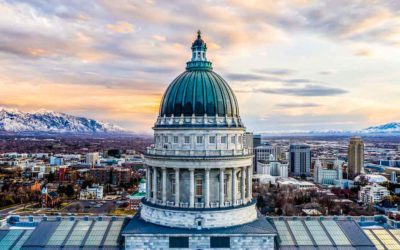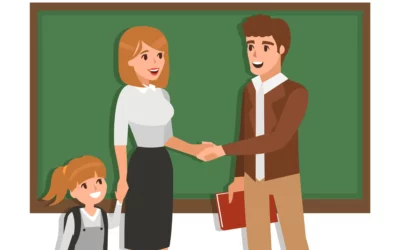
Written by Christine Cooke Fairbanks
March 13, 2020
The spread of the coronavirus has pushed state leaders to prohibit large gatherings – and many schools are responding by canceling classes or moving online.
How long these education precautions last remain to be seen. But even short-term adjustments can have long-term ripple effects.
It’s worth considering: What does the coronavirus mean for public and higher education?
Here are three ways the COVID-19 pandemic may impact education in the long run.
Rethinking what college courses can be offered online
The University of Utah, Weber State University, Utah Valley University, Utah State University, Westminster College, Brigham Young University and Salt Lake Community College have announced that they will move all classes online.
One business professor at the University of Utah said his class would not be as effective online but will be making the adjustment. How his particular class fares online will be an interesting experiment, with outcomes that may reveal flawed assumptions about what can and can’t be offered via technology. But more broadly, these external circumstances may push other similarly reluctant administrators and educators to challenge notions of what courses are not compatible with online delivery. We may even see courses requiring labs, performances, or other hands-on components innovating to offer online or alternative delivery models as well.
It’s also possible that courses previously not offered online will simply remain online even after the virus slows. If students grow accustomed to the format, instructors prefer it, online infrastructure creates more capacity, or the schools see cost savings, this may be an especially likely outcome.
Preparing K-12 students, teachers, parents for increased online schooling
The state’s prohibition on gatherings of 100 or more people does not yet apply to public schools. However, some parents of K-12 public school students – like those in the Murray School District – have been notified that schools are closing.
Other parents – like those in the Alpine School District – have been notified via email of a modified schedule next week: shorter days so teachers can be trained for “a potential need to provide online learning for students in the event of school closures.” Similar to the long-term consequences we can anticipate in higher education, planning and preparing for K-12 technological innovations in times of emergency may end up laying the foundation for these innovations as the new normal in K-12 education.
For instance, if parents and students grow accustomed to online options and find them preferable, they may simply demand that they continue. Likewise, we may see an uptick in Utah’s statewide online education program or a flourishing in online homeschooling options.
Challenging brick-and-mortar schools and campuses
All of this may impact how higher education views the need for brick-and-mortar schools and campuses. No doubt campus life is a unique experience for college students, and public schools have become community centers. But another reality is that buildings are expensive.
Many campus-dwelling college students who are now being faced with the shift to online courses are left to deal with campus life without campus learning. Some students are currently figuring out the status of their on-campus jobs, housing that doesn’t have internet access, or getting meals on site when they’re not allowed to gather.
The existence of brick-and-mortar buildings presupposes that they are a requisite for learning, but when campus life is reduced to student residence only, we as a state may have better reason to critically think about the need for building more buildings, especially in the higher education space.
Utah state leaders are wisely asking questions and taking steps early to prepare for the spread of the coronavirus pandemic. We should do likewise in preparing for its effects in public and higher education.
*Article update: On Friday afternoon, March 13, Utah Gov. Gary Herbert announced a two-week closure to public schools in the state. The section titled, “Preparing K-12 students, teachers, parents for increased online schooling” was written prior to this announcement.*
More Insights
Read More
Is California’s minimum wage hike a mistake?
Is raising the minimum wage a good tool to help low-income workers achieve upward mobility? That’s the key question at the heart of the debate over California’s new $20 an hour minimum wage law for fast food workers.
Why is Utah at odds with Justice Department over treatment of gender-dysphoric prisoner?
Lawsuit illustrates a little-known practice of federal agencies – giving various forms of “guidance” which are not supposed to be legally binding. The practice raises serious legal and constitutional questions.
What would a parent-teacher ‘handshake’ look like in Utah?
This partnership does not allow either party to pass blame entirely to the other. There is no scapegoat, only opportunities for either party or both to work on the factors within their scope.


